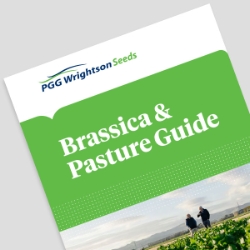Taipan
balansa clover

- Mid-season annual clover providing early spring feed
- Excellent production - increased winter/early spring production compared to sub clover cultivars
- Good adaptability across a wide range of soil types and pH levels
- Ability to tolerate periods of waterlogging
- Suited to pasture mixes with Winter Star II, Feast® II, Lush AR37 and Supercruise ryegrasses
Balansa clover (Trifolium balansae) is an annual clover offering strong spring production, excellent quality and the ability to tolerate waterlogged soils.
Taipan is a mid-maturing balansa clover with high levels of hard seed, allowing for flexibility when seasons are dry. Taipan can perform in various soil types and grow in areas of medium rainfall with excellent waterlogging tolerance. With high dry matter production, Taipan can be grown for quality hay or as part of a perennial pasture system.
Sowing and establishment
Taipan balansa clover is typically sown at 4-6 kg/ha in autumn with pasture mixes that have grasses and other clovers included or can be used with short-term forage options (such as ryegrasses including Winter Star II and Supercruise) in autumn to boost spring pasture growth and quality. Taipan can also be added at 4-6 kg/ha with spring-sown cereals, Italian ryegrasses (such as Supercruise/Feast® II/Lush) and forage brassicas to produce high quality feed in spring/early summer.
Sowing rate: 4-6 kg/ha (Prillcote® or Superstrike® treated seed)
Grazing management
Initial grazings of Taipan should be light and occur once seedlings are firmly established and cannot be pulled out or trampled by grazing livestock. The first grazing is usually about 6 weeks or more after sowing. Given the seed-hardiness of balansa clover, some seeds will continue to germinate over a period of time. If allowed to set seed in the first season, it will continue to contribute to the pasture sward.



